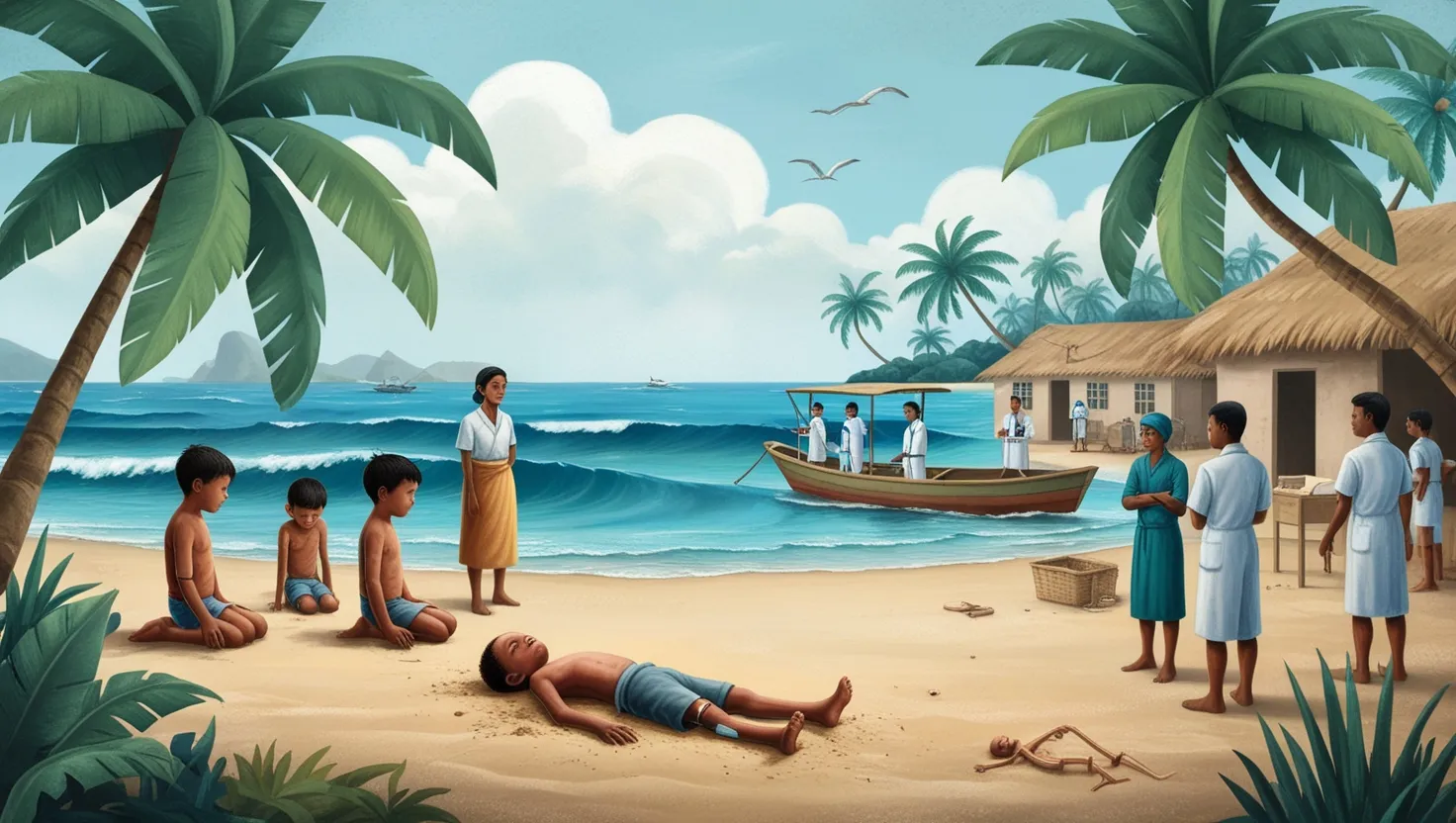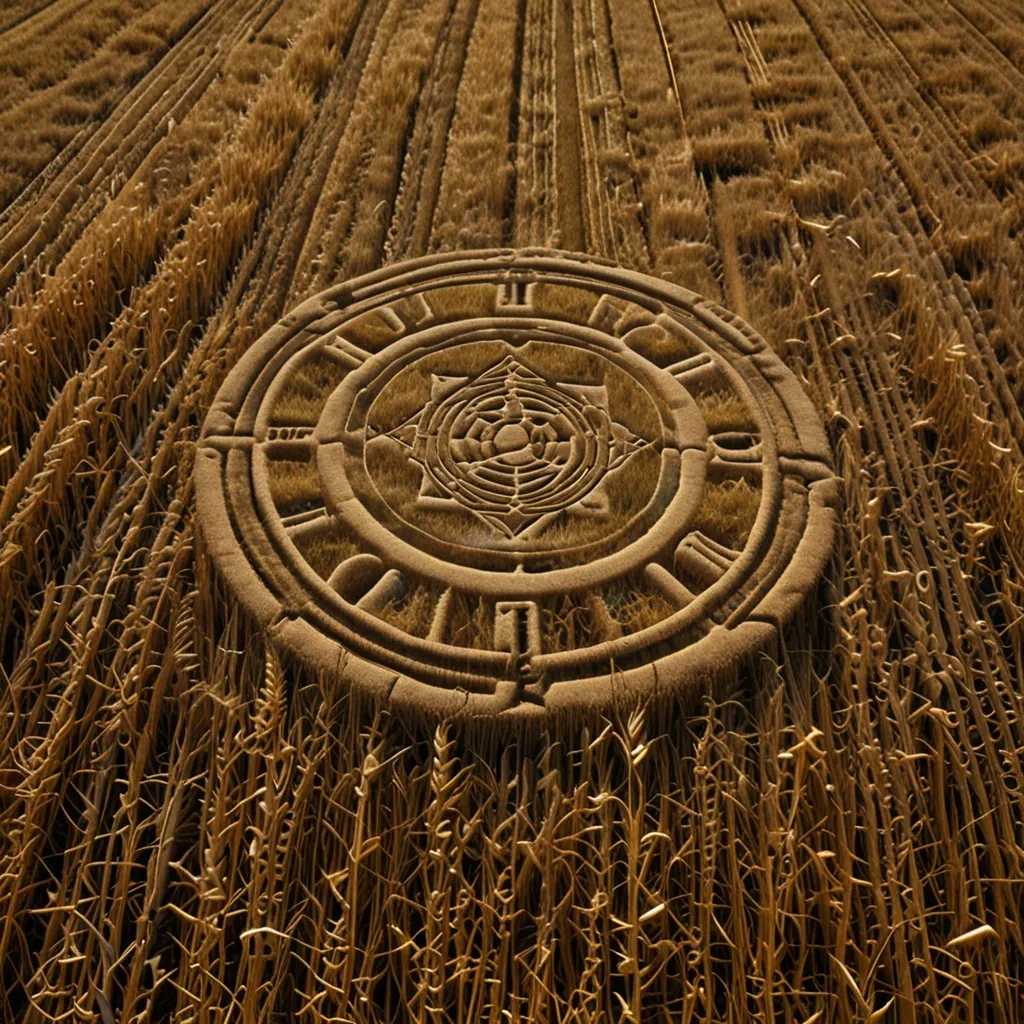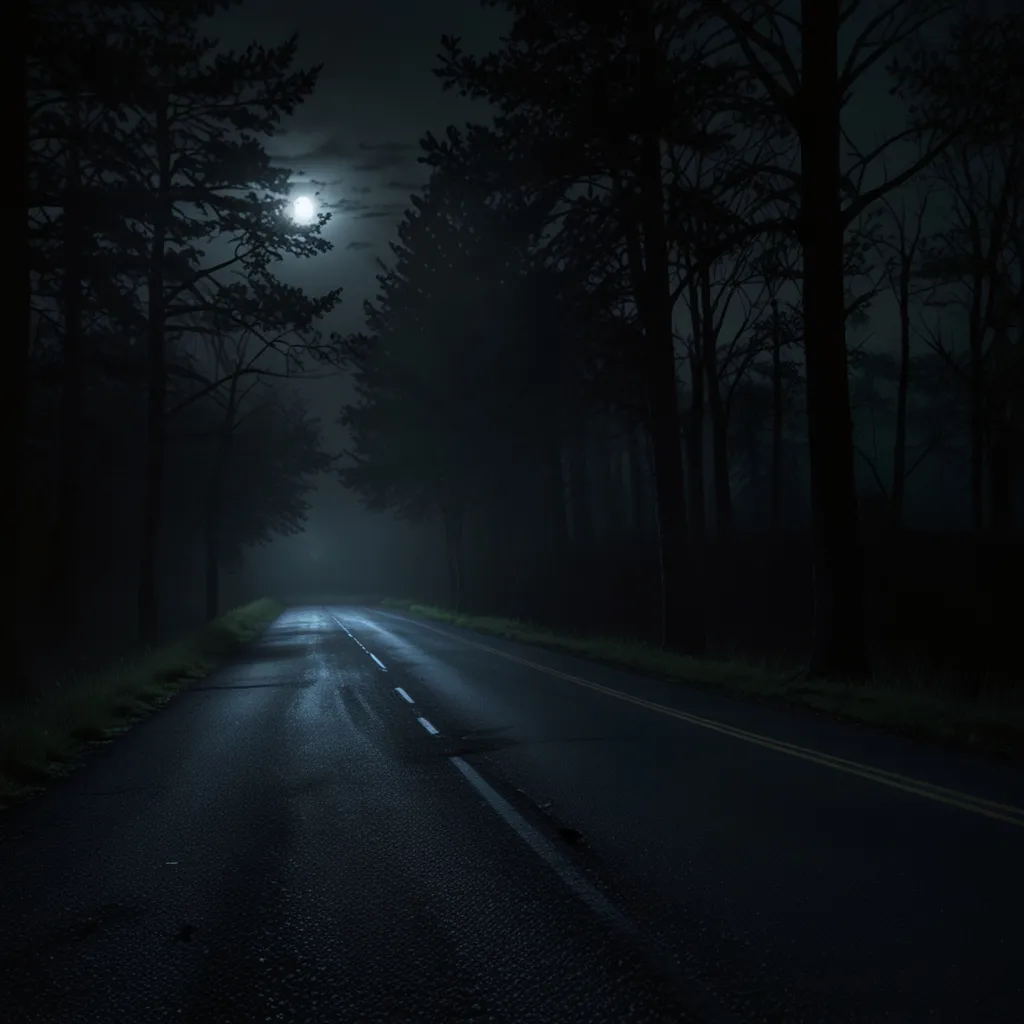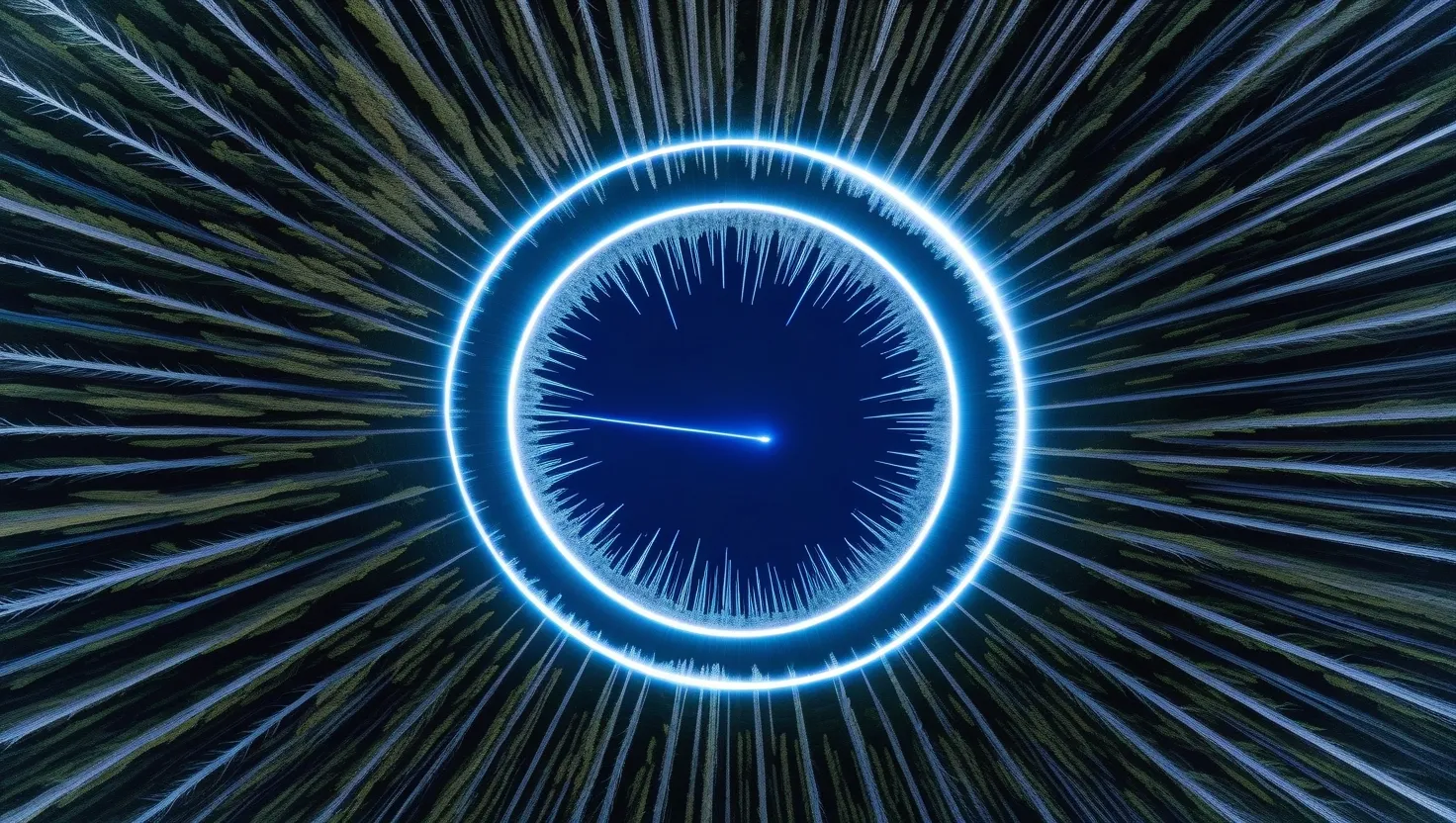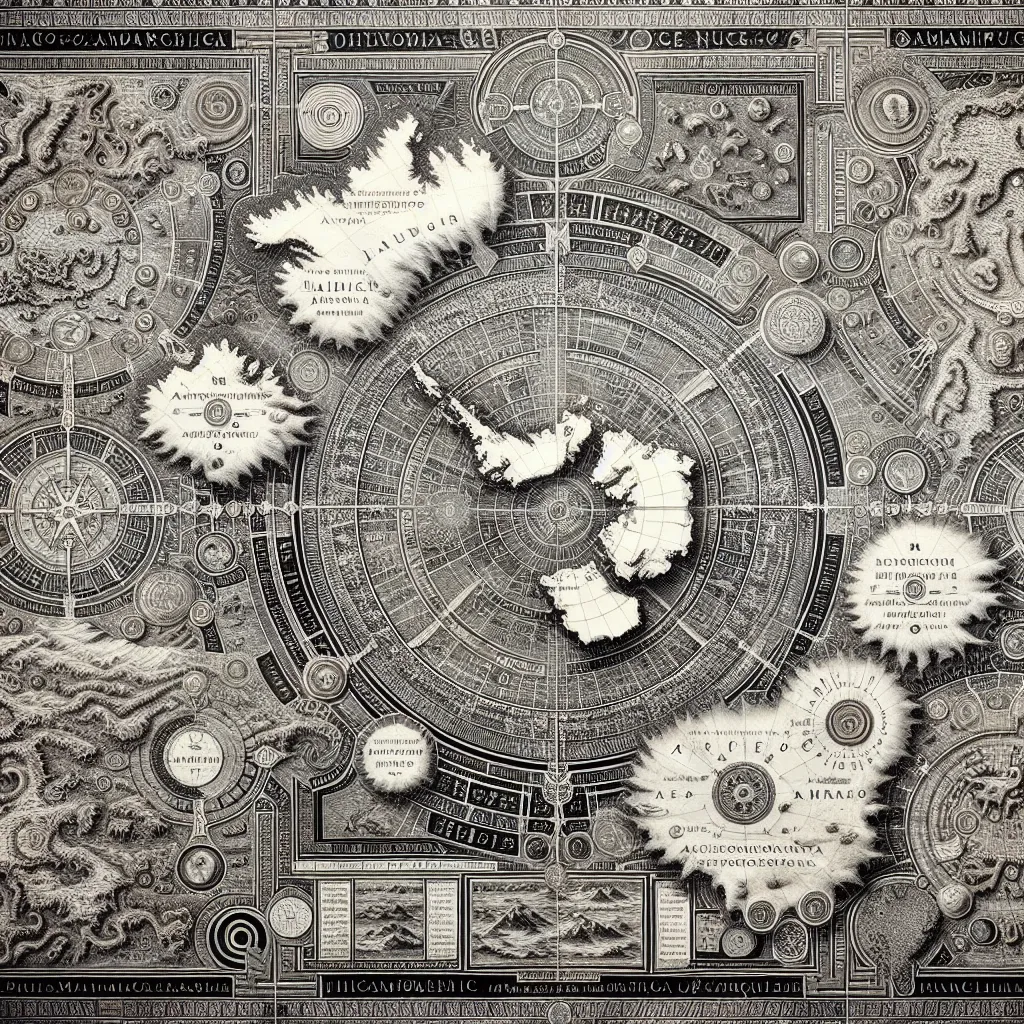Imagine a far-off island, where dazzling blue waves meet leafy palms and laughter echoes from children playing. Then, one morning, there’s silence—a child can’t move an arm. Over the next hours, more children stumble or find their legs limp, unable to rise. Adults worry but remain unaffected. Local doctors are puzzled. Medical teams arrive by boat or small plane, bringing hope but leaving with questions. This is not science fiction. It’s a story I’ve followed through dusty hospital records, traveler journals, and the whispered memories of elders. The events keep recurring, as if some rule of nature was overlooked during the writing of medical textbooks.
What do I find most intriguing? The utter invisibility of the cause. No microscope offers clues. No test tube bubbles up the answer. We’re taught in medicine: every symptom has a source, every outbreak a culprit. But these episodes—where paralysis can sweep through small, tight-knit communities of children and spare their parents—refuse to comply with our neat frameworks. When did we last admit that not knowing can persist for decades?
Some call these episodes epidemics of paralysis, while others skirt the subject altogether because it challenges the very way we organize medical knowledge. As early as the 1930s, clinicians in Tahiti memorialized their frustration in patient charts, describing, in crisp handwriting, normal test results and silent legs. Each investigation added more to the list of what the cause is not: not viral, not bacterial, not genetic, not from water, not from weather. So where does that leave us?
Each recorded case feels like a page from a detective novel written in a language we haven’t learned. It’s unsettling to realize that despite technology’s leaps—MRI scans, nerve conduction studies, genetic probes—the mystery has survived untouched. We know what the paralysis isn’t but not what it is. I sometimes imagine future neurologists dusting off today’s journals, shaking their heads at our failed theories, much like I wince reading 19th-century reports of “still children” in Polynesian villages.
Let’s pause for a second and ask: If a condition resists both our tools and our logic, what might we not be seeing? What does it tell us about the body’s hidden systems or, perhaps, our own investigative blind spots?
“Medicine is a science of uncertainty and an art of probability.” — Sir William Osler
It’s tempting, when faced with such uncertainty, to reach for the plausible. Could there be an unknown microbe, one that leaves no fingerprint in spinal fluid or blood? Some researchers, frustrated with dead ends, have toyed with the idea of invisible prion-like agents—or perhaps environmental triggers so subtle they pass beneath the threshold of our sensors. These suspicions broaden every time fresh clusters occur in distant places—Alaska, South Pacific islands, regions unconnected by travel or trade.
Why only children? The question hovers at the edge of every conversation when I visit elders in communities with collective memories of these outbreaks. There’s a practical awe in the stories: adults recall waking up one morning to find several children unable to rise, as if struck by a spirit. Families describe sitting together, watching a favorite meal go untouched by a child too weak to grasp a spoon, then recovering months later but walking with a changed gait and lost agility.
Here’s what’s particularly fascinating—the symmetry of the impairment. The loss isn’t limited to one limb or one nerve pathway. Instead, arms and legs surrender function together, but sensation remains. The children can feel a light touch; they just can’t respond. Reflexes are absent, indicating a breakdown at some junction between conscious intent and muscular action. What kind of phenomenon bypasses the brain, the nerves, the muscles, the immune system—all at once?
“Somewhere, something incredible is waiting to be known.” — Carl Sagan
When you think about it, the world’s best medical sleuths are yet to find evidence of inflammation or infection. No wave of fever or rash precedes the attacks. No family history, no environmental exposure provides clues. Identical twins can have opposite outcomes, and even the same household can shelter brothers where one is running on the beach and the other cannot stand. Toxins, bacteria, viruses—these are the comfortable explanations, but nature refuses to cooperate.
As years pass, the scientific literature grows cluttered with what I call “anti-findings.” There are negative results for everything. Water supplies test clean. Animal vectors come up short. Even theories that drift toward the bizarre, like rare ion disturbances in the atmosphere or genetic vulnerability triggered by ancestral diets, fall apart under data. Imagine spending decades eliminating one possibility after another, to stand once again at square one.
Yet, out of frustration, emerges adaptability. Indigenous communities have constructed their own language for these outbreaks. In village memory, episodes of sudden “stilling” are woven into moral tales or seasonal warnings. Modern doctors interpret these accounts with skepticism, but the consistency is striking. Why should similar stories crop up across isolated cultures and unrelated times? Might oral histories sometimes capture, in metaphor, what science cannot yet measure?
What about those who partly recover? This is an overlooked aspect. Many children regain movement after months, but rarely all of it. There’s a residue, an unseen weakening of coordination, a trembling that influences handwriting or running. Life goes on, but not as before. These are not full comebacks; the body and mind must recalibrate around new limitations.
“How wonderful that we have met with a paradox. Now we have some hope of making progress.” — Niels Bohr
What’s at stake here isn’t just the welfare of several remote communities but our collective confidence in explanatory models. If a disease can rob children of motion and evade every diagnostic measure, what else might we be missing elsewhere? Some neurologists I’ve consulted wonder if reporting bias is part of the picture—perhaps outbreaks happen more widely, but only certain locales or groups document them. If so, are we witnessing just the visible tip of something larger?
There’s also the sociological dimension. These outbreaks force local healthcare systems to reckon with something for which there are no guidelines, no medicines, and little financial support. With conventional answers off the table, local care becomes a matter of empathy, improvisation, and patience. It’s families, not hospitals, who support months of immobility and slow—sometimes incomplete—recovery.
I once asked a Yupik elder what he thought caused the paralysis. He smiled and said, “Some things are just the way of the land.” Medical teams file this away as folklore. Still, who am I to dismiss traditions that gave comfort and context when Western medicine only brought more questions?
In a world impatient for certainty, these unexplained paralytic outbreaks are a reminder. They teach humility. They remind us how little we truly know about the nexus between mind, nerves, and environment. There’s always a next case, a new child waking to a day that will change them utterly, and we in science remain mostly as spectators.
“Not everything that can be counted counts, and not everything that counts can be counted.” — Albert Einstein
A final thought: as technology evolves, it may eventually shed light on these mysteries. Perhaps molecular tools or disciplines yet unimagined will reveal the missing links. Until then, these silent epidemics persist as a quiet nudge for those of us who investigate the nervous system. Each unanswered case is not a defeat—it’s fuel for curiosity, a call to listen as much to local knowledge as to lab results, and an invitation to widen our understanding of health and disease.
So, the next time we seek answers, maybe we should ask: what are we not measuring, not hearing, not daring to consider? Sometimes, the greatest teaching is in the mystery itself.
